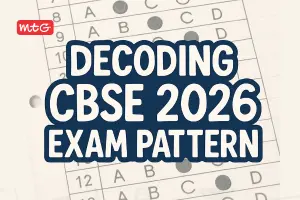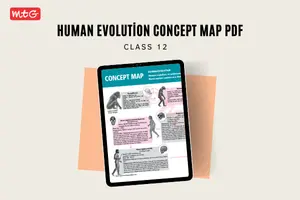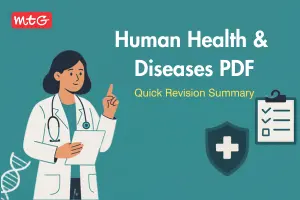Molecular Basis of Inheritance Class 12 Biology MCQ with Answers has been organized according to the latest exam pattern in the CBSE Class 12 Biology syllabus for the upcoming CBSE Class 12 Biology Exam. Principles of Inheritance and Variation covers topics like The DNA, Transcription and Translation, regulation of gene expression, human genome project and DNA fingerprinting, These questions are designed to help students understand the concept thoroughly. They are helpful for revision and for grasping the concepts effectively. The MCQ questions for Chapter 5 Molecular Basis of Inheritance cover in-text book questions and important topics to help students assess their preparation level for CBSE board exams.
Recent – Principles of Inheritance and Variation Class 12 Biology MCQ With Solutions
CBSE Class 12 Chapter 5 Molecular Basis of Inheritance MCQs
Check below the CBSE Class 12 Biology MCQ with answers and Clear your idea of Chapter 5 Molecular Basis of Inheritance.
Q.1. Which of following organisms do not follow central dogma of molecular biology?
(a) DNA viruses (b) RNA viruses
(c) Retroviruses (d) Both (b) and (c)
Answer
Check Out – 11 Most Important Graphics of NCERT Class 12th Biology That You Cannot Miss
Q.2. Histones are rich in
(a) lysine and histidine (b) valine and histidine
(c) arginine and lysine (d) arginine and histidine
Answer
Practice More – CBSE Sample Paper Class 12 for 2023-24 Boards | FREE PDF from MTG
Q.3. If Escherichia coli grown in 15N medium for several generation and after that is allowed to grow in 14N medium for one generation. Which of the following would be correct with regard to the first generation bacteria in 14N medium?
(a) Both strands of DNA would have different density and do not resemble parent DNA.
(b) Both strands of DNA would have different density but resemble parent DNA.
(c) Both strands of DNA would have same density and resemble parent DNA.
( d ) Both strands of DNA would have Ansame density but do not resemble parent DNA.
Answer
(a): The Escherichia coli grown in 15N medium would be fully labelled with 15N but when it is allowed to grow in 14N medium, it would have one parent strand and one new strand, as the DNA replication is semi conservative. The new strand would be labelled with 14N. Therefore, the two strands of DNA molecule of the first generation bacteria would have different density and do not resemble parent DNA.
Q.4. Which of the following pairs of codons includes all three chain termination codons?
(a) TAG, UAA, AGA (b) UAG, UGA, UAA
(c) AGT, TAG, UGA (d) GAT, UAG, AGT
Answer
Q.5. The prokaryotic genome differs from the eukaryotic genome as
(a) the genes are organised into operons in eukaryotes.
(b) the prokaryotes have more complexed DNA with histones
(c) the DNA is circular and single stranded in prokaryotes
(d) the prokaryotes have special structure called nucleosomes.
Answer
Q.6. Anticodon is
(a) paired triplet of bases on mRNA
(b) unpaired triplet of bases on rRNA
(c) an unpaired triplet of bases in an exposed portion of tRNA
(d) an unpaired triplet of bases in an exposed portion of mRNA
Answer
Q.7. Avery, MacLeod and McCarty identified the transforming principle of Streptococcus pneumoniae as
(a) RNA (b) DNA
(c) protein (d) polysaccharide.
Answer
Q.8. Which of the following is an incorrect statement?
(a) DNA fingerprinting involves identifying similarities in repetitive DNA.
(b) In prokaryotes, the DNA is organised into a circular chromosome, supercoiled within the nucleoid region of the cell cytoplasm.
(c) François Jacob and Jacque Monod discovered lac operon.
(d) VNTR is a kind of minisatellite DNA.
Answer
Q.9. Consider the following statements.
(i) The lac operon model has three elements regulator, operator and structural genes.
(ii) The prokaryotic DNA has both exons and introns.
(iii) RNA polymerase binds to promoter and initiates transcription.
(iv) The regulation of lac operon in E. coli occurs at epigenetic level.
(a) (i) and (iii) are correct.
(b) (i) and (ii) are correct.
(c) (i), (ii) and (iii) are correct.
(d) (ii) and (iii) are correct.
Answer
Q.10. Read the given statements with regard to DNA replication and identify the correct one.
(a) The double helix in one daughter cell consists of two strands that were originally in the parent cell, while the double helix in the other daughter cell consists of two newly made strands.
(b) The two strands of the double helices in both daughter cells consist of segments of new and parental DNA.
(c) The double helices in each daughter cell consists of one parental strand and one newly made strand.
(d) None of these
Answer
We hope the MCQs for the CBSE Class 12 Biology Chapter 5 on Molecular Basis of Inheritance are helpful for your board exam preparation.
Keep learning and stay updated with us for more CBSE exam updates.






























